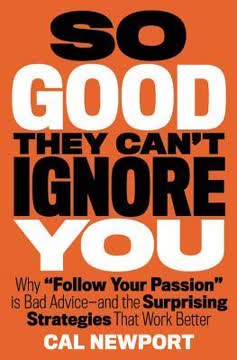Key Takeaways
1. Effective management is about getting results through others
Your job as a manager is to get results.
Results-driven focus. Managers must prioritize outcomes over processes or intentions. This means setting clear expectations, providing necessary resources, and holding team members accountable for their performance. By focusing on results, managers can align their team's efforts with organizational goals and ensure that every action contributes to meaningful progress.
Empowering others. Effective managers understand that their success depends on the success of their team. They delegate tasks and responsibilities appropriately, provide guidance and support when needed, and create an environment where team members can thrive and contribute their best work. This approach not only leads to better outcomes but also fosters employee growth and satisfaction.
Balancing short-term and long-term goals. While immediate results are important, great managers also keep an eye on long-term objectives. They strategically allocate resources, develop talent, and make decisions that position their team and organization for sustained success.
2. Delegate tasks and responsibilities with clear expectations
Guide more, do less.
Effective delegation process:
- Clearly define the task or responsibility
- Set specific expectations and deadlines
- Provide necessary resources and support
- Establish check-in points for progress updates
- Allow autonomy while remaining available for guidance
Benefits of delegation:
- Empowers team members and builds their skills
- Frees up manager's time for higher-level tasks
- Improves overall team productivity and efficiency
- Promotes trust and accountability within the team
Overcoming delegation challenges. Many managers struggle with delegation due to fears of losing control or work not meeting their standards. To overcome these challenges, focus on providing clear instructions, offering constructive feedback, and gradually increasing the complexity of delegated tasks as team members demonstrate competence.
3. Set SMART goals to drive organizational progress
Goals should measure outcomes rather than activities whenever possible.
SMART goal framework:
- Specific: Clearly define what needs to be accomplished
- Measurable: Include concrete criteria for measuring progress
- Ambitious: Push beyond comfort zones to drive growth
- Realistic: Ensure goals are attainable with available resources
- Time-bound: Set specific deadlines for completion
Outcome-focused goals. By focusing on outcomes rather than activities, managers encourage creative problem-solving and innovation. This approach allows team members to find the most effective ways to achieve desired results, rather than simply following prescribed processes.
Regular goal review and adjustment. Goals should be living documents, regularly reviewed and adjusted as circumstances change. This flexibility allows organizations to remain agile and responsive to new opportunities or challenges while maintaining a clear sense of direction.
4. Build a high-performance culture that balances rigor and engagement
Culture is the invisible force that transmits messages about "how we do things around here."
Key elements of high-performance cultures:
- Clear expectations and accountability
- Continuous learning and improvement
- Open communication and feedback
- Recognition and rewards for excellence
- Shared sense of purpose and mission
Balancing rigor and engagement. High-performing cultures demand excellence while also fostering a positive, supportive environment. This balance ensures that team members are challenged to grow and perform at their best while feeling valued and motivated.
Reinforcing culture through actions. Leaders must consistently model the behaviors and values they want to see in their organization. This includes how they communicate, make decisions, handle conflicts, and celebrate successes. Regular rituals and traditions can also help reinforce cultural norms and expectations.
5. Hire, develop, and retain top talent for maximum impact
One high performer will get better results than several mediocre performers combined, paying your best staff members quite well can end up being extremely economical.
Effective hiring process:
- Clearly define the role and required skills
- Build a diverse candidate pool through multiple channels
- Use structured interviews and job-related exercises
- Check references thoroughly
- Make compelling offers to top candidates
Continuous development. Invest in your best performers by providing challenging assignments, mentoring, and learning opportunities. This not only improves their skills but also increases their engagement and loyalty to the organization.
Retention strategies:
- Provide meaningful work and clear growth paths
- Offer competitive compensation and benefits
- Recognize and reward high performance
- Foster a positive work environment and culture
- Regularly discuss career goals and aspirations
6. Address performance issues promptly and compassionately
If you don't put the big rocks in first, you'll never get them in at all.
Progressive discipline approach:
- Informal verbal warning
- Formal written warning
- Final warning or performance improvement plan
- Termination (if necessary)
Coaching-out option. For employees who may not be a good fit for their current role, consider a collaborative approach to help them transition to a more suitable position, either within or outside the organization. This maintains dignity and can result in better outcomes for both the employee and the organization.
Addressing issues early. Prompt action on performance issues prevents small problems from becoming major obstacles. It also sets clear expectations for the entire team and demonstrates a commitment to maintaining high standards.
7. Manage yourself effectively to lead by example
If you don't deliberately choose what not to spend your time on, then those things will get chosen for you by default—or, rather, by the limited number of hours in the day—and they may not be the right items.
Time management strategies:
- Focus on high-impact "big rocks" first
- Use the principle of comparative advantage
- Schedule dedicated work blocks
- Regularly review and adjust priorities
Organizational systems. Develop robust systems for managing information, tasks, and commitments. This might include using digital tools, maintaining clear file structures, or implementing a personal productivity method like Getting Things Done (GTD).
Continuous self-improvement. Great managers commit to ongoing learning and self-reflection. Regularly seek feedback, stay updated on industry trends, and work on developing both technical and soft skills to enhance your leadership effectiveness.
8. Exercise authority assertively without being a wimp or tyrant
The best managers we've seen aren't wimps or tyrants but simply normal, assertive people.
Characteristics of assertive managers:
- Direct and clear communication
- Comfortable with authority
- Fair and impartial decision-making
- Open to feedback and new ideas
- Calm under pressure
Avoiding common pitfalls:
- Wimp: Avoiding conflict, being overly friendly, masking indecision as consensus-building
- Tyrant: Yelling, being defensive, making unreasonable demands, creating a climate of fear
Developing assertiveness. Practice clear communication, set boundaries, and make decisions confidently. Seek feedback from trusted colleagues on your management style and work to address any areas of concern.
9. Prioritize tasks and manage time efficiently for optimal results
The question you need to ask yourself is not, 'Am I getting everything done?' but, 'Am I getting the most important things done?'
Prioritization techniques:
- Use the Eisenhower Matrix to categorize tasks by urgency and importance
- Apply the 80/20 rule (Pareto Principle) to focus on high-impact activities
- Regularly review and adjust priorities based on changing circumstances
Time management strategies:
- Block out dedicated time for important, non-urgent tasks
- Use time-boxing to limit time spent on specific activities
- Batch similar tasks together for increased efficiency
- Leverage technology and automation where possible
Overcoming common time wasters:
- Minimize unnecessary meetings and keep them focused
- Manage email and notifications to reduce distractions
- Learn to say "no" to low-priority requests
- Delegate tasks that can be handled by others
Last updated:
Review Summary
Managing to Change the World receives mostly positive reviews, with an average rating of 4.29/5. Readers appreciate its practical advice, templates, and scripts for nonprofit management. Many find it useful for new and experienced managers alike. The book is praised for its focus on results and ethical management practices. Some criticisms include its corporate-leaning perspective and potential underestimation of small nonprofit structures. Reviewers note that while slightly dated, the core principles remain relevant and valuable for managers in various sectors.
Similar Books










Download PDF
Download EPUB
.epub digital book format is ideal for reading ebooks on phones, tablets, and e-readers.





